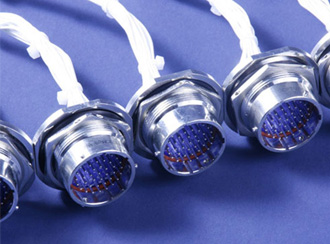Wire gauges help determine the effectiveness and cost of the overall design. That's why our designers are so careful when designing custom wiring harnesses to include the perfect gauge to meet project requirements.
We will show a complete wire gauge guide focusing on topics such as gauge sizing, how to measure gauges, and how to select the correct gauge for a custom wiring application.
First, what does gauge mean in wiring harness design? Wires can be produced in a variety of widths to meet the needs of a project. The diameter of the wire is expressed in units called gauges and is set by American Wire Gauge (AWG), which sets the corresponding numbers for the different diameters of wire gauges.
Contrary to what you may think, the lower AWG numbers actually correspond to larger diameter wire, while the larger numbers in the AWG gauge size chart correspond to smaller diameter wire. AWG sets gauges to form a uniform measurement system for wires and conductors. It is important to note that AWG applies to the round, solid, and non-ferrous wire. Non-ferrous metals, such as aluminum and copper, are excellent conductors.
Wire diameter is critical in custom wire harness design because it helps determine how much electrical load and resistance level, expressed in ohms (Ω), there is. This standardization helps our wire engineers start with materials that have known electrical properties to provide the most efficient design. In the custom cable manufacturing industry, accuracy is important, which is why even the smallest degree of error needs to be corrected in the design before proceeding to production.
Wiring Harnesses
To answer the question, "How thick is a #4 wire?" you need to understand how the AWG gauge system works. As we discussed, the larger gauge numbers in the AWG size chart correspond to smaller wire diameters, and smaller gauge numbers mean larger diameters.
Prior to AWG, different manufacturers had their own unique sizes and systems, which made any kind of standardization difficult. However, AWG is not the only method of instrumentation, and most of the world relies on metric-based systems for instrumentation. For the purposes of this wire gauge guide, we will stick with AWG.
Looking at the AWG wire gauge chart, you will see 0000 at 36 and above. 36 AWG wire will be 0.005 inches, while 0000 AWG wire will be 0.46 inches. The ratio between these substances is exactly 1 to 92. There are 40 different gauge sizes between 0000 and 36, and each successive AWG number has a consistent geometric step.
This is important because it helps determine the constant multiplier on which the entire system is based. For example, for every 6 gauge reduction, the wire diameter doubles. Conversely, reducing the gauge by 3 doubles the cross-sectional area of the wire.

The actual formula for calculating wire gauge diameter is a bit complicated, but our engineers use this formula every day in our designs to find the perfect wire to match the application. Use this formula to calculate the diameter - D(AWG) = 0.005-92 ((36-AWG)/39) inches.
AWG also helps provide consistency in resistance and wire length, as there are known levels for different gauges. The greater the circumference of the wire, the lower the resistance of the signal or current. Very small gauge wire may not be able to handle a given electrical load, which can be dangerous and even lead to a fire. Wire gauges must be precise in order to create the ideal level of resistance in a given custom wire and cable harness.
Another important consideration is the length of the wire. With longer wires, the signal or current must simply travel farther before it reaches the terminal. Longer distances result in greater resistance, which can degrade the signal. A larger gauge wire can help ensure that the signal or current can travel these long distances without becoming too bad. In our AWG size chart, you'll see this expressed as an ohmic measurement per 1,000 feet.
You may just think you should always use a larger gauge wire and finish, but this blanket approach can prove inefficient, especially from a material cost standpoint. As a custom cable manufacturer, we examine all the nuances of the design to make the most of the customer's budget given the parameters of the intended application. This level of complexity is the real difference in working with a custom manufacturer rather than relying on off-the-shelf cable assemblies.
 Previous:
ISO13485:2016 Certificate
Previous:
ISO13485:2016 Certificate
Copyright © Xiamen New East Asia Electronic Enterprise Co. (NEAEE), Ltd. All Rights Reserved Sitemap |